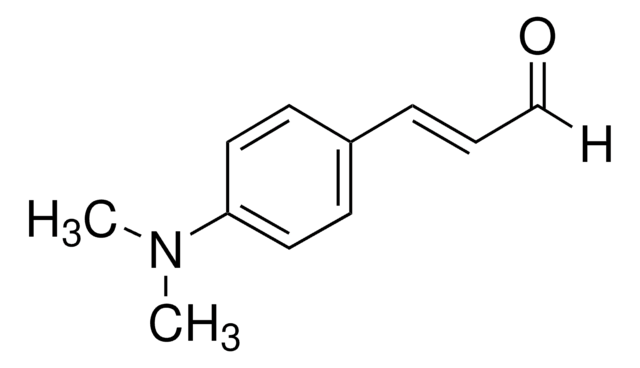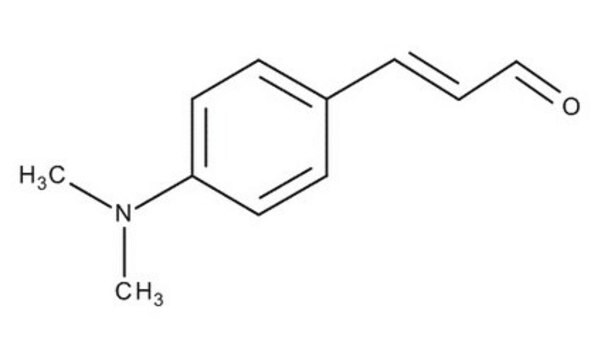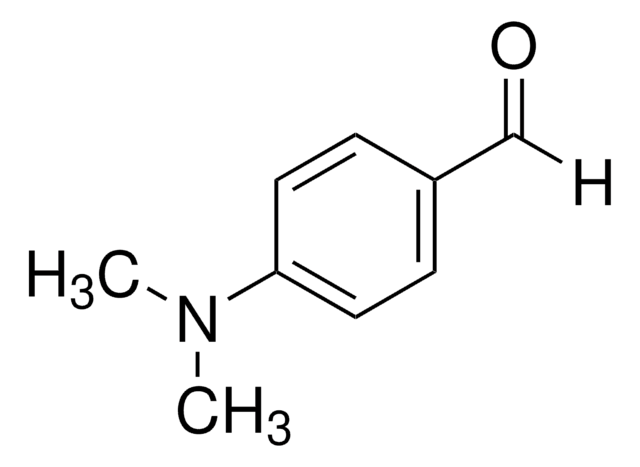49825
DMACA-Reagens
suitable for microbiology
Synonym(e):
4-(Dimethylamino)-zimtaldehyd -Lösung
About This Item
Empfohlene Produkte
Methode(n)
microbe id | specific enzyme detection: suitable
Qualitätsniveau
Anwendung(en)
agriculture
environmental
food and beverages
microbiology
Eignung
Escherichia coli
Streptococcus spp.
SMILES String
[H]C(=O)\C=C\c1ccc(cc1)N(C)C
InChI
1S/C11H13NO/c1-12(2)11-7-5-10(6-8-11)4-3-9-13/h3-9H,1-2H3/b4-3+
InChIKey
RUKJCCIJLIMGEP-ONEGZZNKSA-N
Allgemeine Beschreibung
Anwendung
Komponenten
Dimethylaminocinnamaldehyd 1g
Salzsäure (konz.) 1.0 ml
Wasser, dest. 99.0 ml
Sonstige Hinweise
Signalwort
Warning
H-Sätze
P-Sätze
Gefahreneinstufungen
Met. Corr. 1
Lagerklassenschlüssel
8B - Non-combustible corrosive hazardous materials
WGK
WGK 2
Flammpunkt (°F)
Not applicable
Flammpunkt (°C)
Not applicable
Persönliche Schutzausrüstung
Faceshields, Gloves, Goggles
Hier finden Sie alle aktuellen Versionen:
Besitzen Sie dieses Produkt bereits?
In der Dokumentenbibliothek finden Sie die Dokumentation zu den Produkten, die Sie kürzlich erworben haben.
Artikel
Sigma-Aldrich.com presents an article concerning Differentiation of Escherichia coli from coliforms.
Unser Team von Wissenschaftlern verfügt über Erfahrung in allen Forschungsbereichen einschließlich Life Science, Materialwissenschaften, chemischer Synthese, Chromatographie, Analytik und vielen mehr..
Setzen Sie sich mit dem technischen Dienst in Verbindung.






